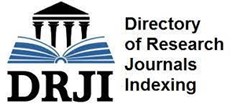Subject Area
Craniocervical junction
Document Type
Original Study
Abstract
Background Data: Atlantoaxial rotatory fixation is a relatively uncommon condition. It remains a poorly understood entity despite many reports in the literature. There is no consensus about the best imaging modality for the diagnosis and the best therapeutic modality the patients benefit from. Purpose: This study was conducted to determine the efficacy of imaging modality and treatment measures and to determine risk factors for recurrence in consideration of the cause, management, and outcome. Study Design: This is a retrospective clinical case study and a literature review.Patients and Methods: Our hospital records were reviewed between January 1995 and December 2011. We were able to track 12 children with atlantoaxial rotatory fixation treated by posterior fixation. The mean age was 8.6+2.4 years. Seven were boys and 5 were girls. Sports injury was reported in 4 cases, falls in 3 cases, unknown injury in 3 cases, and road traffic accident in 2 cases. All children had neck pain with torticollis and decreased cervical motion. The mean duration of symptoms before diagnosis was 21.3 days. All children were neurologically intact. All underwent plain cervical radiographs and computed tomography to document atlantoaxial rotation. All children were submitted to closed reduction with cervical traction followed by posterior surgical fixation and fusion after failure of conservative treatment. Results: All procedures went uneventfully with no added neurologic deficits and a stable repair over at least 12 months follow-up period. Easiness of reduction was affected by the duration of symptoms prior to traction. All had radiographic documentation of stability and fusion. One girl had recurrent rotation two years after modified Gallie fixation after minor head trauma. She was repaired using Harms’ technique. Conclusion: The optimal therapy of atlantoaxial rotatory fixation entails earlydiagnosis with computed tomography. Reduction with cervical skull tongue traction followed by posterior fixation and fusion accomplished reduction and was curative to all patients. There was no correlation between recurrence and age, sex of the child or the cause of rotation. (2012ESJ011)
Keywords
Rotatory, atlantoaxial, subluxation, fixation, Trauma, children
How to Cite This Article
Abou-Madawi, Ali; Elkhatib, Esam; and El-Qazaz, Mohamed
(2012)
"Atlantoaxial Rotatory Fixation in Children. A Clinical Case Study and Review of the Literature.,"
Advanced Spine Journal: Vol. 3
:
Iss.
1
, Article 1.
Available at: https://doi.org/10.21608/esj.2012.3787























